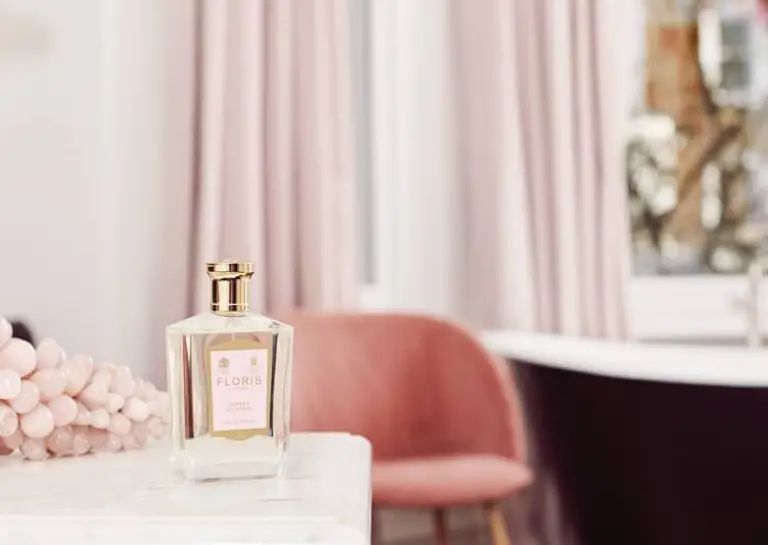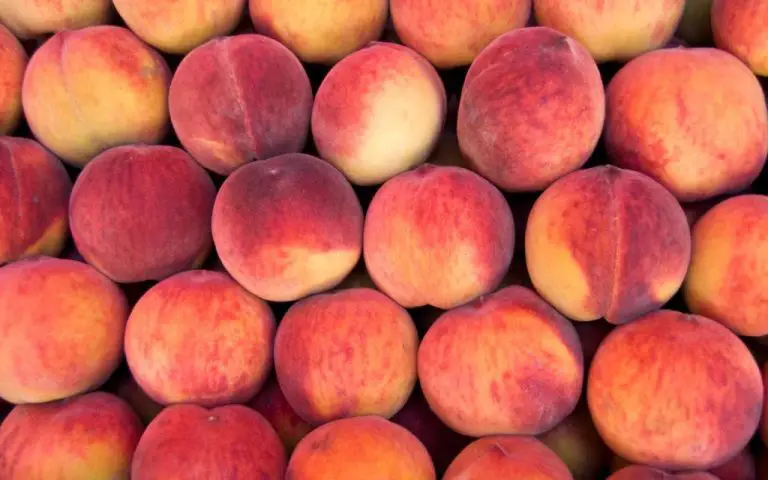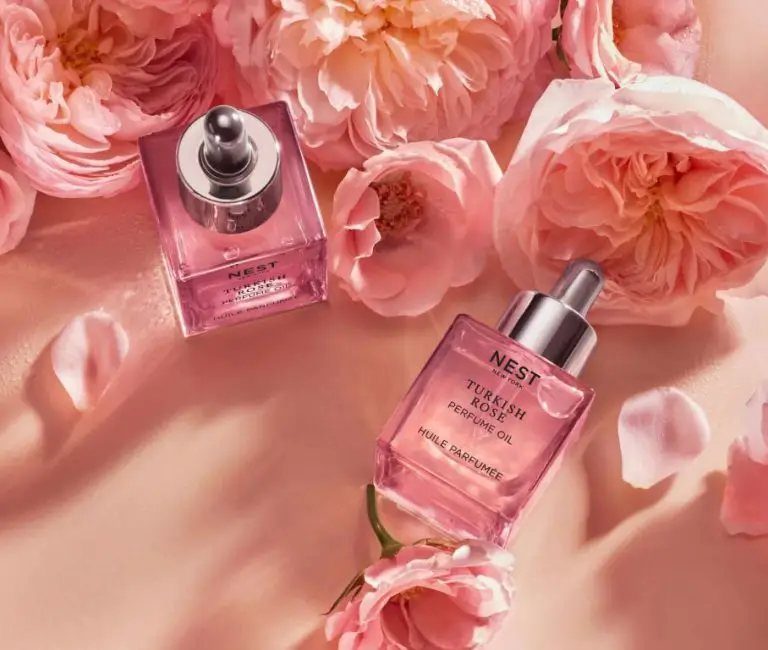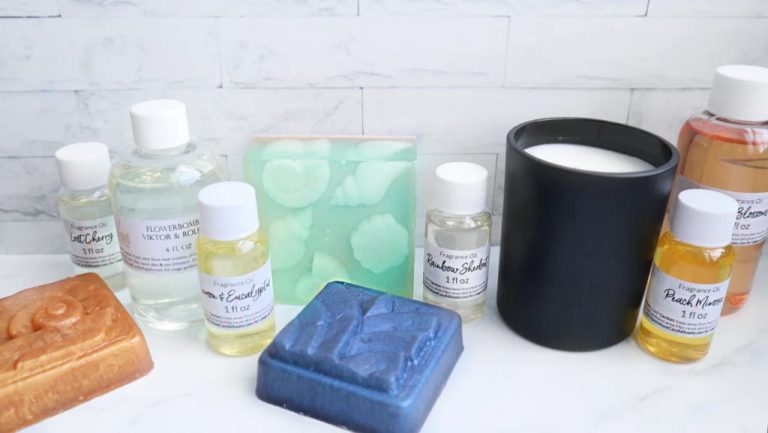Which Perfumes Contain Myrrh?
Myrrh is an aromatic resin that comes from Commiphora trees native to Africa and the Middle East. It has a rich, warm, balsamic scent and has been used in perfumery for thousands of years. The word “myrrh” comes from the Arabic word “murr,” meaning bitter. True to its name, myrrh has a slightly bitter, medicinal quality.
According to the Perfume Society, myrrh was a key ingredient in the ancient Egyptian temple incense kyphi, which was used to purify sacred spaces https://perfumesociety.org/ingredients-post/myrrh/. In ancient Greece and Rome, myrrh was popular for perfumes, incense, and medicine.
Today, myrrh is an important base note in perfumes and colognes. Its resinous, warm, slightly smoky scent helps anchor other notes and add depth. Myrrh has remained a staple perfume ingredient for millennia thanks to its rich complexity and longevity. When used skillfully, just a touch of myrrh’s bitter mysticism can transform the most luxurious fragrances.
Myrrh’s Scent Profile
Myrrh has a distinctive, rich, warm, resinous, and slightly balsamic fragrance. The scent is often described as woody, earthy, and medicinal with a subtle sweetness. Myrrh essential oil and absolute both capture the characteristic fragrance, which is derived from the dried sap of the small, thorny Commiphora myrrha tree. When used in perfumes, myrrh provides a smoky, ambery depth that pairs well with other resins, spices, and woods.
The reviewer at Celie and Couch describes myrrh’s scent profile as “a resinous, slightly balsamic fragrance” that has “depth and complexity” (Celie and Couch). The woody, earthy notes are balanced by a subtle sweetness that makes it both warm and calming. Myrrh is often referred to as medicinal smelling, but in a pleasant way that conjures ancient apothecaries.
Myrrh in Women’s Perfumes
Myrrh lends a warm, resinous base to many classic women’s perfumes. Iconic scents featuring myrrh include Guerlain’s Shalimar, Lancôme’s O de Lancome, Estée Lauder’s Youth-Dew, and Chanel No. 5. The sweet benzoin-like aroma pairs beautifully with feminine florals like rose, jasmine, and iris.
Modern women’s fragrances also utilize myrrh’s rich, smoky character. Tom Ford’s Black Orchid highlights myrrh’s exotic spice. The drydown of Thierry Mugler’s Alien features myrrh blended with woody notes. Myrrh adds depth alongside fruity and floral accords in Juicy Couture’s Viva La Juicy and Viktor & Rolf’s Flowerbomb.
Overall, myrrh provides an elegant ambery base for perfumes spanning decades, from vintage scents to today’s designer offerings. Its balsamic, oriental warmth complements an array of compositions for women.
Myrrh in Men’s Colognes
Myrrh lends a warm, smoky, and slightly sweet aroma to men’s colognes. Its balsamic, resinous scent provides an alluring depth and sophistication to masculine fragrances.
Many classic men’s colognes feature myrrh in their formula. Giorgio Armani’s timeless Acqua Di Gio contains myrrh as a base note, lending a subtle earthiness. The icon Ralph Lauren Polo also utilizes myrrh as a grounding base note. Creed’s Green Irish Tweed, beloved by men since its debut in 1985, includes myrrh for a hint of mystique.
Modern men’s colognes also incorporate myrrh’s exotic aroma. Tom Ford’s Tuscan Leather combines myrrh with raspberry, saffron and jasmine for a rich, leather-tinged scent. Myrrh adds a sensual, ambery depth to Dolce and Gabbana’s festive limited-edition The One For Men cologne. Burberry Mr. Burberry features a heart of myrrh for a touch of darkness and intrigue.
Whether in time-tested favorites or today’s hottest new releases, myrrh is widely used in men’s fragrances to provide warm, woodsy undertones and seductive, masculine appeal.
Myrrh Note Pairs Well With
Myrrh has a rich, resinous, woody aroma that blends beautifully with certain other fragrance notes. According to Fragrantica, some of the notes that pair exceptionally well with myrrh include:
Oud – The combination of myrrh and oud creates an exotic, incense-like scent. Fragrances like Tom Ford Myrrhe Mystère blend these two notes.
Rose – The sweet floral note of rose acts as a nice counterbalance to the earthy, woody myrrh. Their union produces a harmonious, multi-faceted scent profile. Kirke by Tiziana Terenzi showcases this blend.
Frankincense – Pairing the resinous scents of myrrh and frankincense creates a mystical, church-like aroma. Frankincense & Myrrh Noir combines these two rich notes.
Sandalwood – The creamy, soft woodiness of sandalwood works well with spicy myrrh. The scents effortlessly complement each other. Ambre 83 by Henry Jacques layers these two base notes.
Vanilla – Sweet, sensual vanilla helps smooth out myrrh’s rougher edges. The notes mingle beautifully in scents like Armani Privé Cuir Amethyste.
Myrrh Perfume Base Notes
Myrrh is commonly used as a base note in perfumes. The base notes are the heaviest scents that provide the foundation in a fragrance. Base notes like myrrh linger the longest on the skin and give the perfume depth, structure and longevity.
Myrrh is an excellent base note because it has a rich, warm, balsamic aroma that blends well with other base notes like vanilla, sandalwood and musk. It acts as a natural fixative, meaning it helps the scent last longer. The resinous properties of myrrh make it stay closer to the skin and prevent lighter notes from evaporating quickly.
When myrrh is used as a base note, it grounds the other fragrances and provides a subtle backdrop for the middle and top notes to dance on. It brings depth and complexity while allowing the brighter, fresher notes to shine through. Even as the top and middle notes fade, the myrrh base continues to emit its sensual, smoky fragrance.
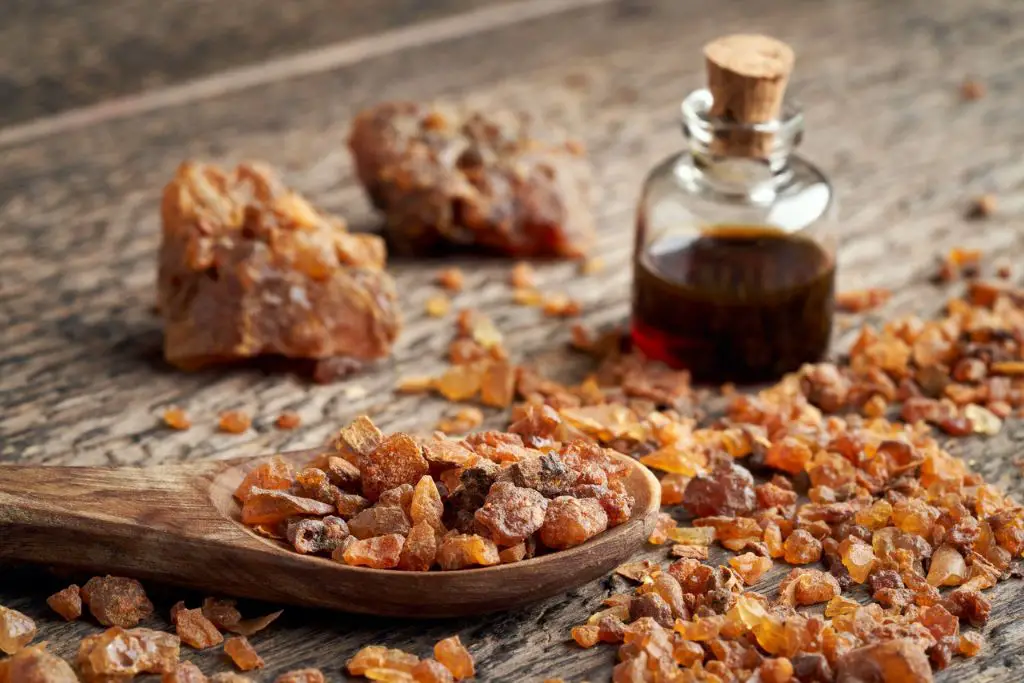
Myrrh Middle Notes
Myrrh is often used as a middle or heart note in perfumes. The rich, warm, balsamic aroma of myrrh emerges once the top notes fade, helping to round out and deepen the fragrance. As a heart note, myrrh adds an earthy, resinous dimension that lingers on the skin for hours.
Some examples of fragrances that feature myrrh as a middle note include:
- Chanel No 5 – The floral heart is enriched by myrrh’s warm, spicy aroma.
- Dior Poison – Myrrh adds to the sultry, narcotic heart at the center of this dark, spicy scent.
- Gucci Guilty – Myrrh contributes a subtle spiciness to the powdery floral heart.
- Yves Saint Laurent Opium – An intense dose of myrrh is blended with spices and resins in this exotic, narcotic heart.
- Calvin Klein Obsession – Myrrh amplifies the rich, Oriental heart notes, including honey and jasmine.
As these examples illustrate, myrrh is commonly used in the heart of perfumes, helping shape the fragrance’s core essence and character. The sweet yet earthy aroma of myrrh provides an alluring bridge between the brighter top notes and deeper base.
Myrrh Top Notes
Myrrh is rarely used as a top note in perfumes. Top notes are the first notes you smell when you initially spray a fragrance. They tend to be light, fresh scents that dissipate quickly. Common top note ingredients include citrus, floral and herbal essences. Myrrh is a rich, warm, balsamic fragrance derived from the sap of the Commiphora myrrha tree. This means it is often too heavy, resinous and long-lasting to work as a top note.
When myrrh is used as a top note, perfumers tend to use a very small amount in the fragrance formula. This allows its subtle nuances to lift the other top notes without overpowering them. The resinous scent of myrrh adds a hint of mystique and depth to the brighter, fleeting top notes. For example, the discontinued Ralph Lauren fragrance Polo Modern Reserve featured myrrh among its sparkling citrus and verbena top notes. The myrrh added a touch of warmth and mystery to the opening of the fragrance before transitioning into its wood, ginger and black pepper heart notes.
Myrrh Essential Oil
Myrrh essential oil is steam distilled from the resin of the Commiphora myrrha tree native to regions of Africa and the Middle East. The aromatic oil has an earthy, balsamic, slightly medicinal scent. It is rich in compounds like furanoeudesma-1,3-diene and curzerene which give it its unique odor profile.
In perfumery, myrrh essential oil is used as a base and middle note. It acts as a fixative that helps anchor and blend other fragrances. The complexity of myrrh oil means it pairs well with a diverse range of notes. It brings depth to floral heart notes like rose, Neroli, ylang ylang, and jasmine. Myrrh also complements oriental and ambery accords. Its medicinal facets work with herbs like patchouli, vetiver, lavender, and clary sage. The resinous aroma blends nicely with woods like cedar, sandalwood, and oud. Overall, myrrh oil adds a subtle mysteriousness.
Conclusion
Myrrh is an ancient aromatic resin that has been used in perfumery for thousands of years. With its warm, sweet, and slightly spicy scent, myrrh adds depth and mystery to perfume compositions. Both woody yet balsamic, myrrh acts as an excellent base and middle note in fragrances. Its rich aroma makes it a popular component in oriental, chypre, and fougère style perfumes for both men and women. Myrrh blends well with notes like frankincense, rose, vanilla, patchouli, oakmoss, and bergamot. When used thoughtfully in the perfume pyramid, myrrh’s mystical aroma shines through, evoking images of ancient lands and faraway places. Though not often found in the top notes, when used as a heart or base note, myrrh gives fragrances staying power, richness, and resonant depth. Next time you are shopping for perfume, keep an eye out for myrrh in the blend of essential oils—chances are its addition will provide that touch of timeless magic you’re looking for.


